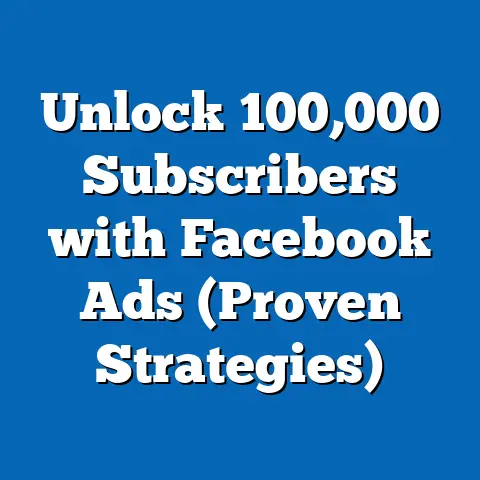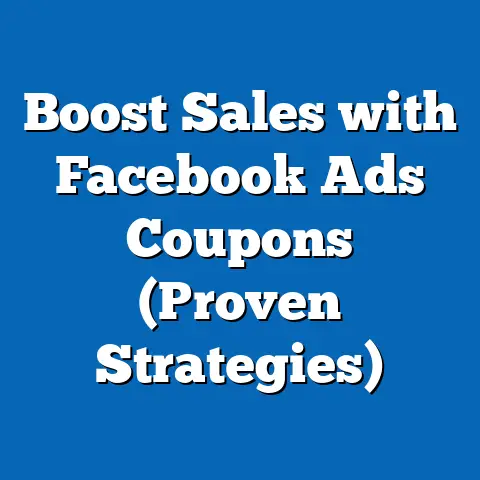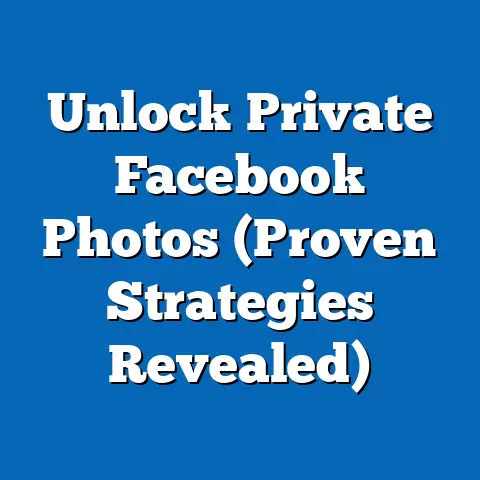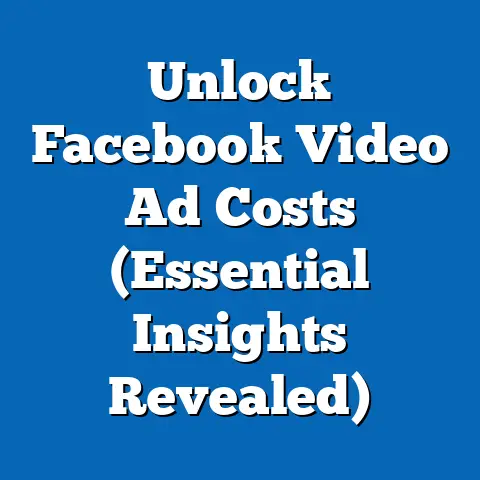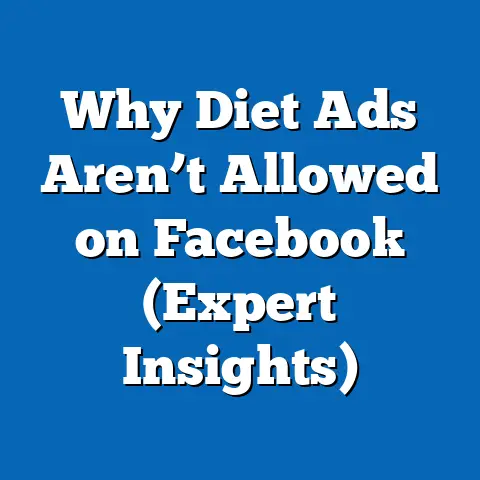Transform Facebook Banner Ads (Mastering Engagement Strategies)
Imagine scrolling through Facebook, a vibrant tapestry of images, videos, and text vying for your attention. Notifications ping, a constant hum of digital activity. Your thumb flicks, a reflex honed by countless hours spent navigating this social landscape. Suddenly, a banner ad catches your eye. It’s not just another advertisement; it’s a burst of color, a clever phrase, an irresistible offer that momentarily halts your endless scroll. That’s the power of a well-crafted Facebook banner ad, and mastering the art of engagement is the key to unlocking its potential.
I’ve spent years navigating the ever-changing world of Facebook advertising, and I can tell you one thing: the right approach to banner ads can transform passive viewers into active participants. It’s not just about slapping up a pretty picture; it’s about understanding the psychology of your audience, crafting compelling visuals, and writing copy that compels action. In this guide, I’ll share my insights and experiences to help you transform your Facebook banner ads and achieve remarkable results.
Understanding Facebook Banner Ads
Facebook banner ads are a fundamental tool in the digital marketer’s arsenal. They’re visual advertisements displayed in various locations across the Facebook platform, including the right column on desktop, within the Facebook News Feed, and in-stream video placements. These ads are designed to capture the attention of users as they browse content, promoting products, services, or events.
The significance of banner ads in digital marketing cannot be overstated. Consider this: Facebook boasts billions of active users, making it a prime platform for reaching a vast and diverse audience. According to recent statistics, visual content is 40 times more likely to be shared on social media than other types of content. This underscores the importance of visually engaging banner ads in driving brand awareness, generating leads, and increasing conversions.
There are primarily two types of Facebook banner ads:
- Static Banner Ads: These ads consist of a single image or graphic with accompanying text. They are simple to create and can be effective for conveying a straightforward message.
- Dynamic Banner Ads: These ads incorporate animation, video, or interactive elements. They are more visually engaging and can capture attention more effectively, especially in crowded news feeds.
The key to success lies in creating visually arresting designs that stand out from the clutter. This means using high-quality images, bold colors, and clear typography to make your banner ads impossible to ignore.
Takeaway: Facebook banner ads are a crucial component of digital marketing, offering a powerful way to reach a massive audience. Understanding the difference between static and dynamic ads, and focusing on visually arresting designs, is the first step to success.
The Psychology of Engagement
Engagement isn’t just about getting clicks; it’s about forging a connection with your audience. Understanding the psychological triggers that drive engagement is crucial for crafting banner ads that resonate with viewers. These triggers include:
- Curiosity: People are naturally curious. Teasing information or posing a question can pique their interest and prompt them to click.
- Urgency: Creating a sense of urgency, such as limited-time offers or deadlines, can motivate immediate action.
- Relatability: Ads that speak directly to the audience’s needs, desires, or pain points are more likely to resonate and drive engagement.
Colors and emotions play a significant role in ad design. Different colors evoke different emotions, and choosing the right color palette can enhance the impact of your message. For example, blue often conveys trust and stability, while red can create a sense of excitement and urgency. I’ve seen campaigns where simply changing the button color from blue to orange resulted in a significant increase in click-through rates.
Storytelling is another powerful tool for fostering a deeper connection with the audience. Instead of just listing features, try telling a story that highlights the benefits of your product or service. For instance, a skincare brand could share a testimonial from a customer who struggled with acne and found relief using their products. This humanizes the brand and makes it more relatable.
I remember working on a campaign for a local bakery. Instead of just showcasing their pastries, we created a series of banner ads that told the story of a young couple who met at the bakery and fell in love over a shared slice of cake. The ads were a huge success, driving traffic to the bakery and increasing sales.
Takeaway: Understanding the psychology of engagement is essential for crafting banner ads that resonate with your audience. By leveraging curiosity, urgency, relatability, colors, emotions, and storytelling, you can create ads that capture attention and drive action.
Crafting Compelling Visuals
Visuals are the first thing people notice in a banner ad. That’s why it’s essential to invest time and effort in creating compelling visuals that grab attention and convey your message effectively. The key elements of effective visual design include:
- Typography: Choose fonts that are easy to read and align with your brand’s identity. Use different font sizes and weights to create hierarchy and emphasize key messages.
- Imagery: Use high-quality images or graphics that are relevant to your product or service. Avoid using generic stock photos that look staged or unnatural.
- Layout: Create a clear and uncluttered layout that guides the viewer’s eye to the most important elements of the ad. Use white space effectively to create breathing room and prevent the ad from feeling overwhelming.
Brand consistency is crucial for building recognition and trust. Ensure that your banner ads align with your overall brand identity by using consistent colors, fonts, and imagery. This helps reinforce your brand message and makes it easier for people to recognize your ads.
I once worked with a company that completely rebranded their image. The new branding was fantastic, but their Facebook ads still reflected the old identity. This created confusion among their audience and undermined their marketing efforts. Once we updated their ads to align with the new branding, their engagement rates soared.
When selecting images, it’s important to choose ones that resonate with your target audience. Consider their demographics, interests, and values. For example, if you’re targeting millennials, you might use images that are authentic, relatable, and visually appealing.
Some brands that excel in visual design include Nike, Apple, and Airbnb. These companies consistently create stunning visuals that capture attention and convey their brand message effectively. Take a look at their Facebook ads for inspiration and see how they use typography, imagery, and layout to create compelling visuals.
Takeaway: Compelling visuals are essential for capturing attention and conveying your message effectively. By focusing on typography, imagery, layout, and brand consistency, you can create banner ads that stand out from the clutter and resonate with your audience.
Writing Engaging Copy
While visuals grab attention, it’s the copy that seals the deal. Concise and impactful ad copy is essential for capturing attention quickly and persuading people to take action. Here are some strategies for writing engaging copy:
- Keep it short and sweet: People have short attention spans, so get straight to the point. Use concise language and avoid jargon or technical terms.
- Highlight the benefits: Focus on the benefits of your product or service, not just the features. Explain how it will solve a problem or improve their lives.
- Use strong verbs: Use action verbs that create a sense of urgency and excitement. For example, instead of saying “Learn more,” say “Discover now!”
Clear calls-to-action (CTAs) are crucial for influencing user behavior. Your CTA should tell people exactly what you want them to do, whether it’s visiting your website, making a purchase, or signing up for a newsletter. Use strong action verbs and create a sense of urgency.
Here are some examples of compelling ad copy that has successfully driven engagement:
- “Limited Time Offer: Get 50% Off Your First Order! Shop Now.”
- “Transform Your Skin in 30 Days! Try Our New Skincare Kit.”
- “Learn the Secrets to Financial Freedom! Sign Up for Our Free Webinar.”
I’ve found that testing different CTAs can significantly impact your results. I once ran a campaign where we tested three different CTAs: “Learn More,” “Shop Now,” and “Get Started.” “Shop Now” outperformed the other two by a wide margin, demonstrating the importance of clear and direct CTAs.
Takeaway: Engaging copy is essential for capturing attention and persuading people to take action. By keeping it short and sweet, highlighting the benefits, using strong verbs, and including clear CTAs, you can create ad copy that drives results.
A/B Testing and Optimization
A/B testing is a crucial process for optimizing your Facebook banner ads and maximizing engagement. It involves creating two versions of an ad (A and B) and testing them against each other to see which one performs better. This allows you to make data-driven decisions and refine your ad strategies.
In the context of Facebook banner ads, A/B testing can be used to optimize various elements, including:
- Visuals: Test different images, graphics, or videos to see which ones resonate best with your audience.
- Copy: Test different headlines, descriptions, or CTAs to see which ones drive the most engagement.
- Targeting: Test different audience segments to see which ones are most responsive to your ads.
Setting up A/B tests effectively requires careful planning and execution. Here are some tips:
- Test one variable at a time: This allows you to isolate the impact of each variable and determine what’s working and what’s not.
- Use a control group: This provides a baseline for comparison and ensures that your results are accurate.
- Run tests for a sufficient period of time: This allows you to gather enough data to draw meaningful conclusions.
Analyzing the results of your A/B tests is crucial for making data-driven decisions. Look at key metrics such as click-through rate (CTR), conversion rate, and cost per acquisition (CPA) to see which ad is performing better.
I once worked on a campaign where we A/B tested two different headlines. Headline A was more generic, while Headline B was more specific and targeted. Headline B outperformed Headline A by 30%, demonstrating the importance of targeted messaging.
Takeaway: A/B testing is an essential process for optimizing your Facebook banner ads and maximizing engagement. By testing different visuals, copy, and targeting options, you can make data-driven decisions and refine your ad strategies for better results.
Case Studies of Successful Facebook Banner Ads
To further illustrate the power of effective Facebook banner ads, let’s examine some case studies of brands that have successfully transformed their ads to achieve high engagement rates.
- Dollar Shave Club: Dollar Shave Club is known for its humorous and relatable ads. Their Facebook banner ads often feature witty copy and engaging visuals that resonate with their target audience of young men. They have successfully used A/B testing to optimize their ads and drive conversions.
- Warby Parker: Warby Parker is a popular eyewear brand that uses Facebook banner ads to showcase their stylish glasses and promote their try-on program. Their ads feature high-quality images and clear CTAs that encourage people to visit their website.
- HubSpot: HubSpot is a marketing automation platform that uses Facebook banner ads to promote their free tools and resources. Their ads are informative and educational, providing value to their target audience of marketers and business owners.
These case studies highlight the importance of understanding your audience, crafting compelling visuals, writing engaging copy, and using A/B testing to optimize your ads. By following these strategies, you can transform your Facebook banner ads into powerful marketing tools that drive engagement and achieve your business goals.
Takeaway: Examining successful case studies can provide valuable insights and inspiration for your own Facebook banner ads. By learning from the strategies employed by brands like Dollar Shave Club, Warby Parker, and HubSpot, you can transform your ads and achieve remarkable results.
Conclusion
Mastering engagement strategies is essential for transforming Facebook banner ads into powerful marketing tools. By understanding the psychology of your audience, crafting compelling visuals, writing engaging copy, and using A/B testing to optimize your ads, you can create banner ads that capture attention, drive engagement, and achieve your business goals.
Remember, the landscape of digital advertising is ever-evolving, and the potential for creativity and innovation is limitless. Don’t be afraid to experiment with different strategies and techniques to see what works best for your brand. And always stay up-to-date with the latest trends and best practices in Facebook advertising.
Now, it’s time to take action. Start by analyzing your current Facebook banner ads and identifying areas for improvement. Use the insights shared in this guide to craft more compelling visuals, write more engaging copy, and optimize your targeting. And don’t forget to A/B test your ads to see what’s working and what’s not.
With dedication, creativity, and a data-driven approach, you can transform your Facebook banner ads and achieve remarkable results. Good luck, and happy advertising!

